February & April 2021, Ambodiforaha & Marofototra, Masoala peninsula, Madagascar
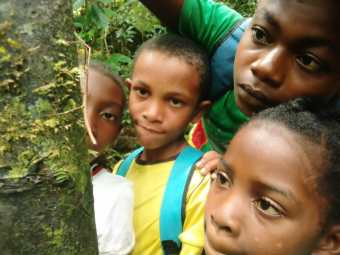
Returning to eager children and heavy rains in the village of Ambodiforaha, PICC teacher Pascal Elison came prepared with new learning materials and notebooks for the students that had participated in the July 2020 mini-PICC session.
The focus of this new session was conservation issues; how the students can help the lemurs, and how the lemurs help their families. The time was divided between the classroom (during the heaviest rains) and hikes through the Masoala forest, both during the day and at night (the children’s favorite!).
The many days of heavy rain provided Pascal with an opportunity to gather the students indoors at their school and lead them in conservation lessons using the Lemur Conservation Coloring and Activity Book: Masoala edition. The students are becoming expert artists through careful observation of Pascal’s guide books and by learning how to create realistic colors through combining and layering their colored pencils to accurately portray the lemurs and other forest animals and plants.
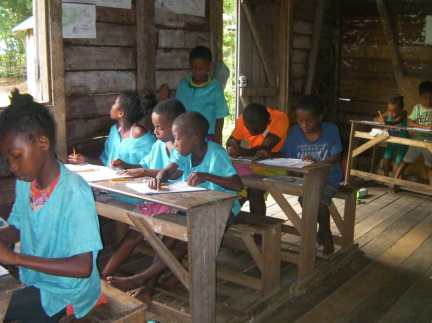
Pascal led the youngest group of students (4-8 years old) in the forest to learn how to find, identify, and draw the animals and plants, making detailed notes in their notebooks (before those pages got too soggy in the heavy rains). He focused his lessons on how the plants and animals are important to not only the lemurs but also to their families. Over the two PICC sessions, the children have become quite knowledgable about lemur behavior, foraging, habitat needs, and conservation issues.
In Pascal’s own words, the children had amazing experiences getting to know more about the lemurs and the forest. “All of the students walked to another site of primary rainforest call Lohatrozona… Sometimes we stop to explain about the tree how the lemurs to eat and which season blossoms and fruits and then draw the plants and animals such as frogs, millipedes, antlions, geckos, and so on. I know where the lemur’s territory is in that place 6 months ago and the same students went there. We check most of the territory but saw none. At 1:30 we find one red ruffed lemur set on the canopy to keep guard the fruits on their territory, so every kids watch and look at exactly their colors (black face, chestnut, forearm and tail; white neck, red ruffed and body), unfortunately we cannot draw that lemur because it have very heavy rain to broken most of notebook and sketching of the kids. And then we go home for lunch.”
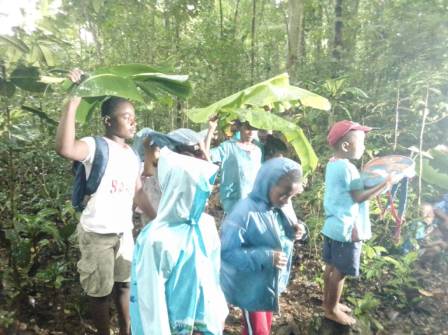
During the day walks, Pascal led the children slowly and took advantage of lessons along the way. He taught them scientific facts of the forest but also shared traditional Malagasy tales of the chameleon, bush pig, and kingfisher, and also had students contributing their knowledge of these tales as they had learned them.
As they explored, opportunities came up to be aware of the details above, around and below themselves, and to engage with even the littlest details. When they saw a tiny leaf chameleon on the ground they learned not only to step carefully, but had an opportunity to see it up close and sit down to make an accurate sketch.
Reinforcing the concept that lemurs have behaviors and needs similar to our own, Pascal found white-fronted brown lemurs and red-ruffed lemurs in same tree, sharing the ripened fruit. He had the students watch the lemurs and noted “even though it’s very high it’s very funny to watch because four red-ruffed lemurs take a nap time, sleep on a tree fork like people on the bed, and some groom and play”.
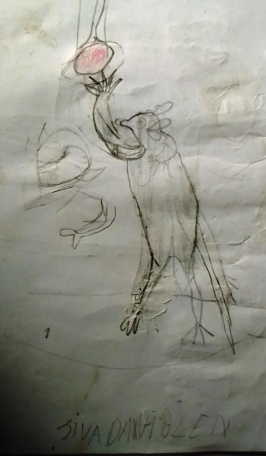
For the night walks, Pascal describes the incredible diversity of wildlife they saw. No wonder the children love them! “At 6:30 pm we start for the night walk. In the beginning we saw the big nosed chameleon when we find that I explain how can find the tiny chameleon at night to my students so when we use the torch chameleon’s color like white and after 30 second he turn brown and excellent camouflage. We continue after 10 meters we find the Masoala sportive lemur, and then brown mouse lemur, giant leaf-tailed gecko, Boophis frog, and big nosed chameleon. We climb up of little hill, one Masoala sportive lemur again set on the tree trunk, and after we start go back home, on the way two students find the tiny big nosed chameleon that the kids learn and know how can they can find even it is very high on the stick.” Good sightings by the students!
Learning to search out small details in the dark by looking for shapes and eye shine with their torches (flashlights), they saw a huge scorpion and a tree boa, and the eye-shine of a Masoala woolly lemur. After a long search they saw two greater dwarf lemurs feeding on the Ravenal tree’s nectar, providing an opportunity for Pascal to explain how the greater dwarf lemur pollinates the Ravenala tree (Traveller’s Palm, the symbol of Madagascar).
The children are so excited about the learning opportunities and experiencing the forest at night that they join in even if they don’t have shoes or flashlights. We will be providing Pascal with funds to purchase a large number of solar powered flashlights so that every child is able to participate safely. You can help us with these efforts by donating on our Support Us page.
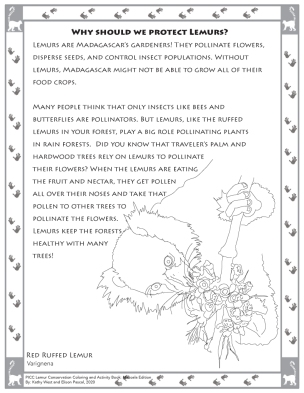
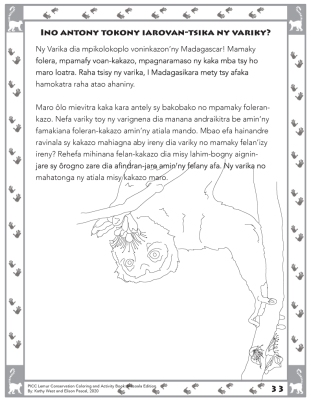
Lemurs are important pollinators of many trees used by both lemurs and people. Pages 32 – 33 in the Lemur Conservation Coloring and Activity Book: Masoala edition, 2020.
On especially rainy days, Pascal had the students walk around the forests and fields surrounding their village and share traditional animal tales. They had fun building on each other’s knowledge of the animal folklore – like why the crested drongo became the birds’ queen, and why the flying fox sleeps with its head turned downward. We’ll have to ask Pascal for the answers to those riddles!
Passing by another, more remote village on his way home from Ambodiforaha, Pascal met with the teachers and village leaders of Marofototra and was asked to come back and teach a mini-PICC session to their 60 children.
Marofototra, Madagascar. Pascal returned to the village of Marofototra in early April with notebooks, PICC worksheets and colored pencils. Even though the students were on school holiday and some had traveled to another area, they were so excited about the opportunity that they walked long distances each day, arriving at midday to attend Pascal’s classes.
In this remote part of the Masoala peninsula there are no tourist paths through the forest, only local trails. However, Pascal is a skilled wildlife guide and the children already knew how to move through the forest, so they were able to take these trails even in the heavy rains and still find lemurs and “lots and lots of frogs.”
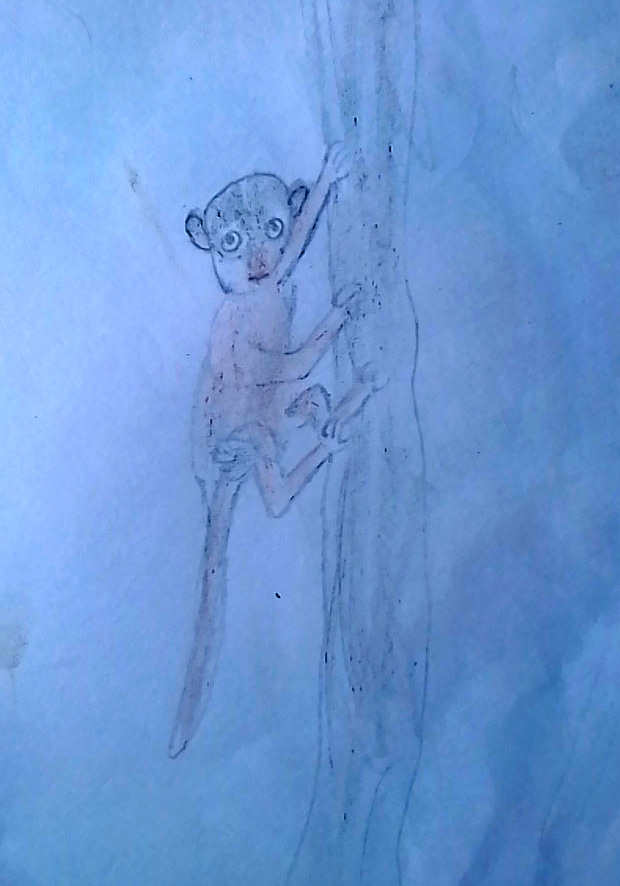
Masoala sportive lemur. Drawing by Marofototra student, PICC Session April 2021 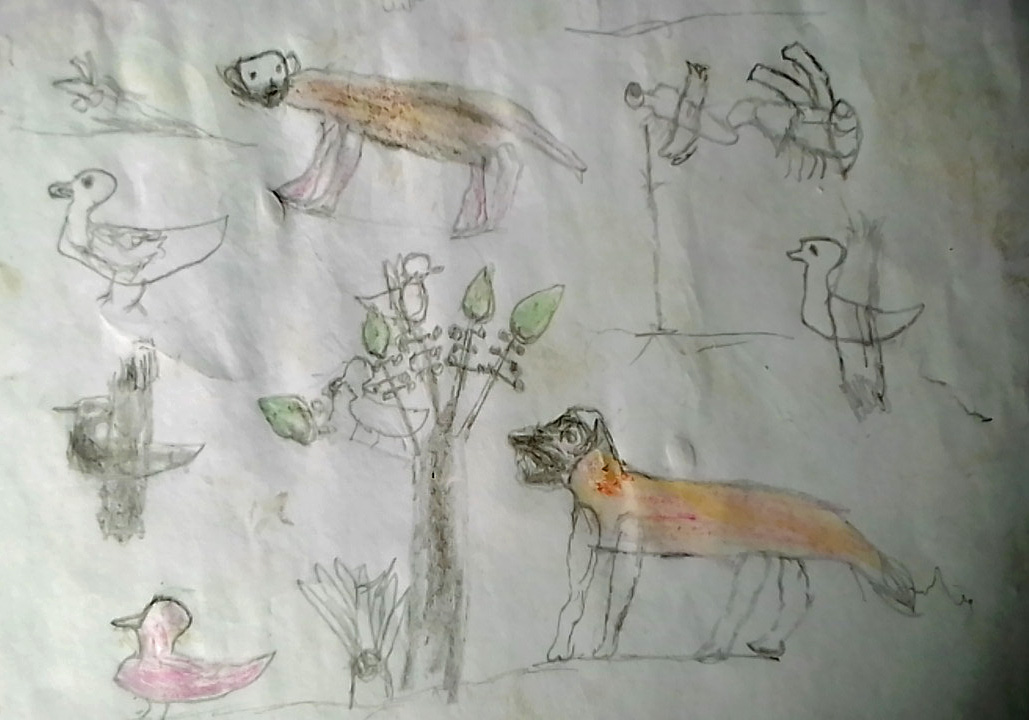
A fosa hunting a lemur. Predation in action! Drawing by Marofototra student, PICC Session April 2021 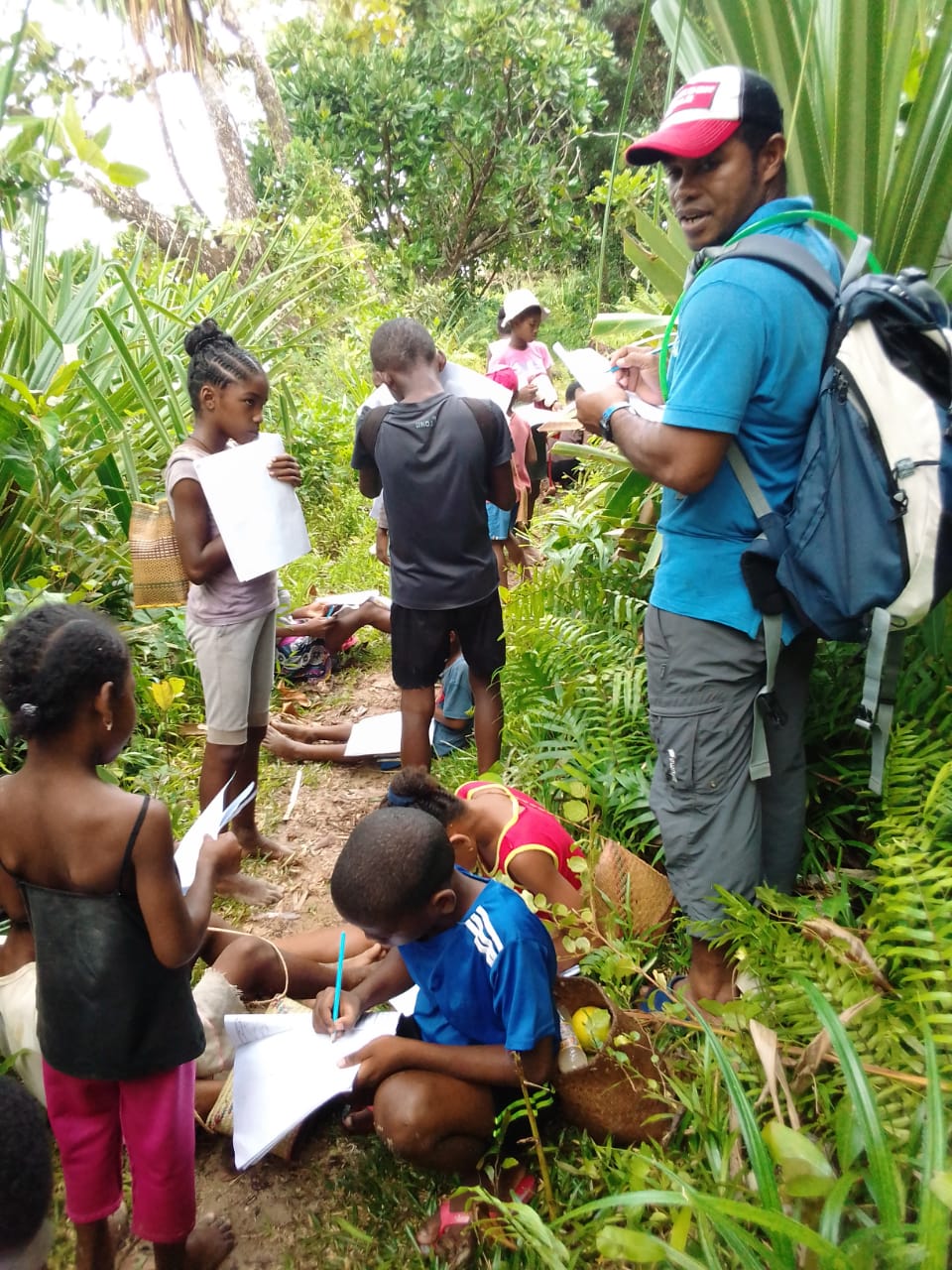
Marofototra students with Pascal Elison, PICC Session April 2021 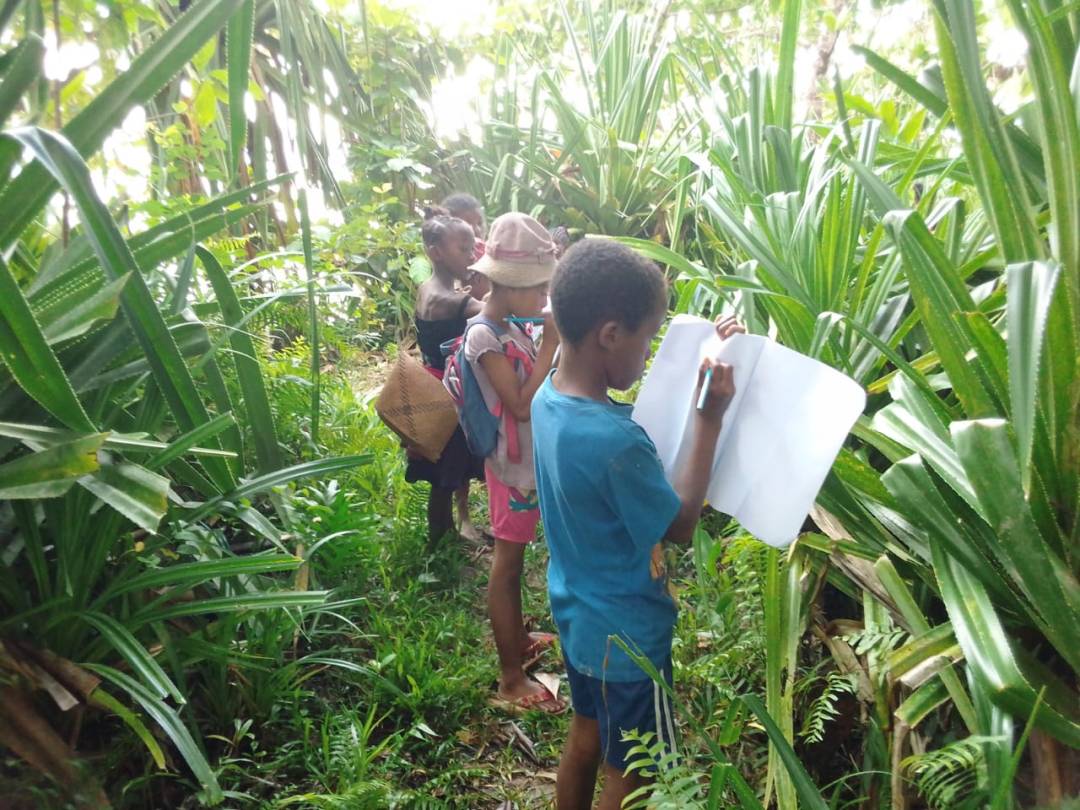
Marofototra students drawing their local plants and animals. PICC Session April 2021. Photo by Pascal Elison.
On another ever-popular night walk the children found 3 species of endangered lemurs (IUCN Redlist– Endangered and decreasing): the Masoala (Moore’s) woolly lemur, the (Masoala) Scott’s sportive lemur, and the hairy-eared dwarf lemur. They also saw a little, quick-moving mouse lemur and a bamboo lemur. Seeing the bamboo lemur gave Pascal a chance to teach the children about the amazing ability of these lemurs to detoxify the cyanide in bamboo shoots and take advantage of this food source that other animals can’t use. He was sure to emphasize how the lemurs can convert cyanide and safely eat bamboo, but people can’t!
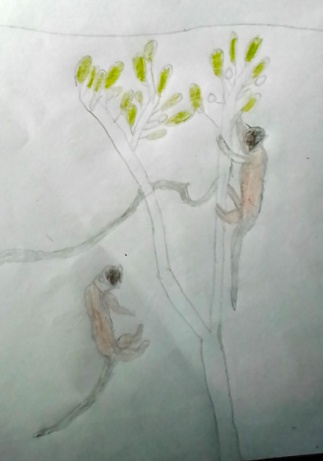
Watching the lemurs feed on fruit, Pascal explained to the children how the lemurs eat the fruit and then poop out the seeds, providing the seedling with nutrients to grow a new, healthy tree more quickly. Just like people grow bananas, mangos, oranges, and other fruits, he talked about how these lemurs are growing their own fruit trees for their future enjoyment.
After spending two weeks in each village of Marofototra and Ambodiforaha teaching the children and leading them on hikes, Pascal finished his classes by expanding the outreach to the families. Together with the students, he talked to the parents to share what they had learned and also to engage the families in the conservation message. Happily, many of the students are telling us that they have convinced their parents that the forests and lemurs need to be protected and they are continuing to learn and develop their drawing and storytelling skills.
It is so satisfying to hear that after the PICC session in Ambodiforaha, the children were thrilled to have a critically endangered red ruffed lemur (Varecia rubra) come into their village, be able to identify it, and to share that excitement with their parents. We are proud of what Pascal and the students have accomplished in their communities!
Update April 12, 2021. Sadly, the coronavirus pandemic has now reached the more remote areas of Madagascar and the schools are closed, along with all of the transportation into the area. This means the children have no formal school but can continue to learn from the PICC materials. They have colored the entire activity book and have hung the images on the walls in their houses so that they see it every day and teach their parents what they’ve learned about the lemurs, the forests and conservation. (Download your own copy of the book here.)
At the time of Pascal’s visits, these communities were free of coronavirus so the children and Pascal are pictured without masks.
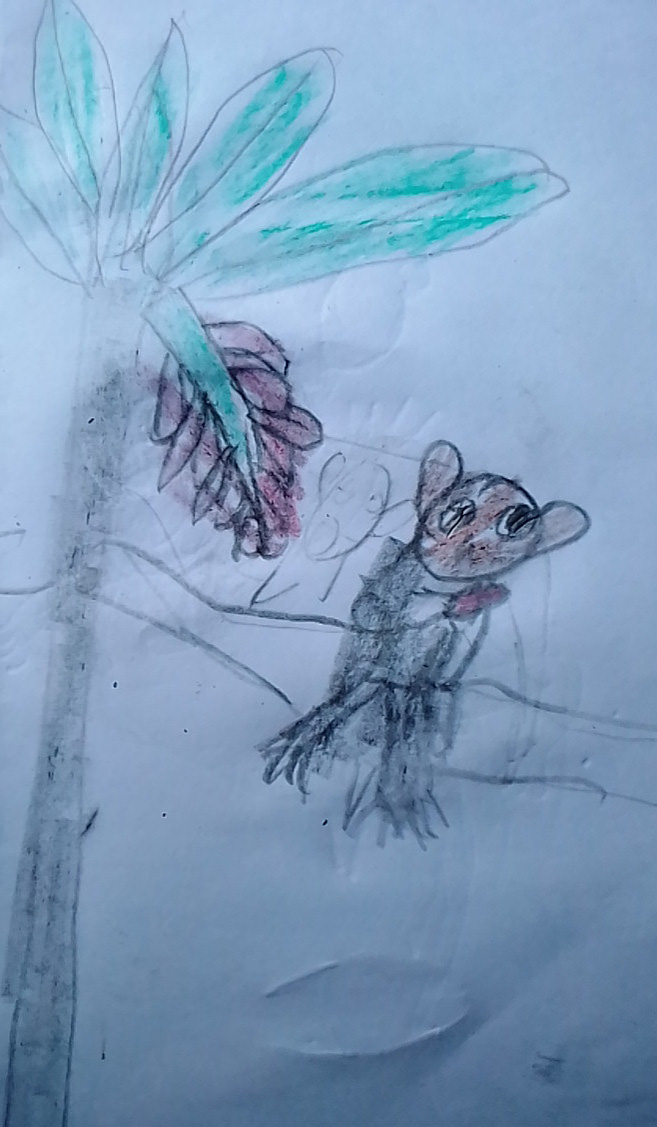
Lemur feeding on fruit. Drawing by Marofototra student, PICC Session April 2021 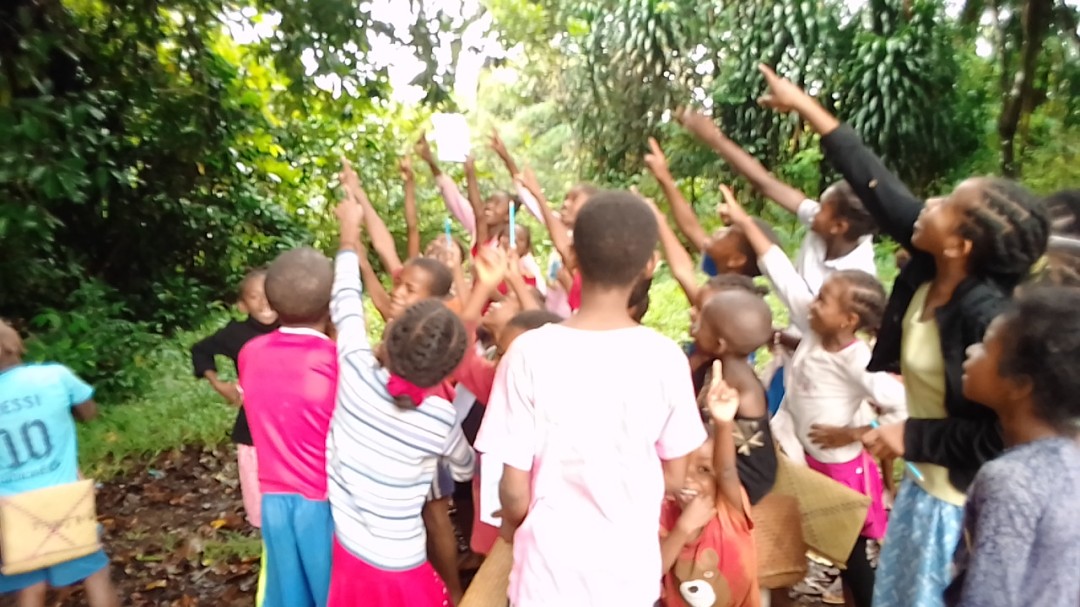
Marofototra students finding a lemur in the canopy. PICC Session April 2021. Photo by Pascal Elison 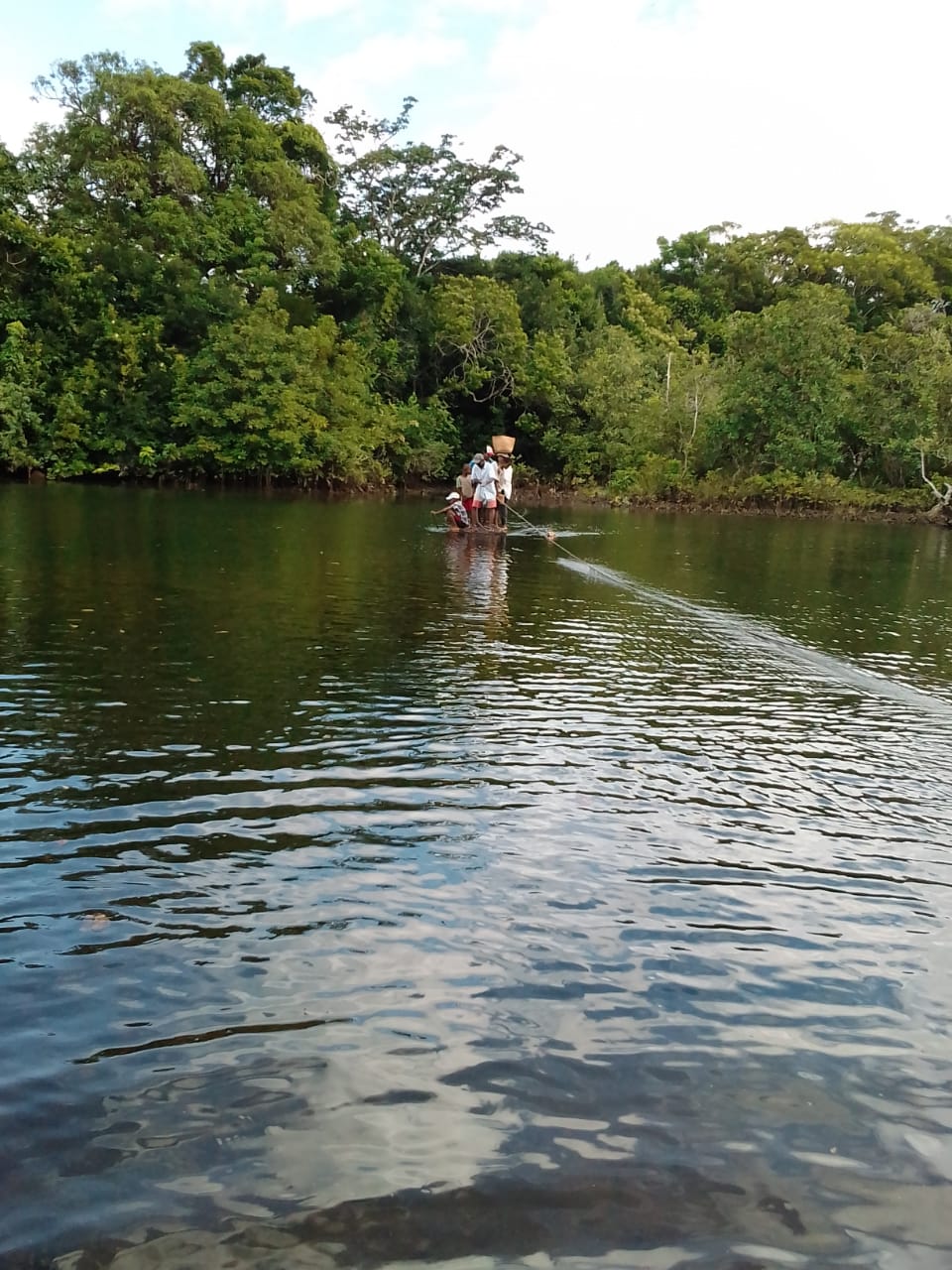
A special thank you to our supporters who have provided funds to purchase the learning materials and pay Pascal a salary!